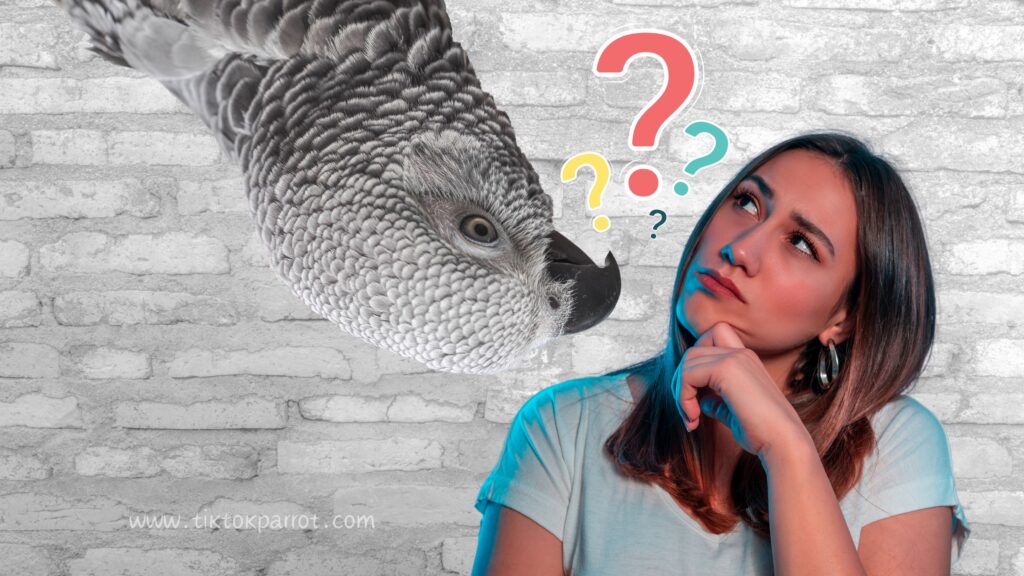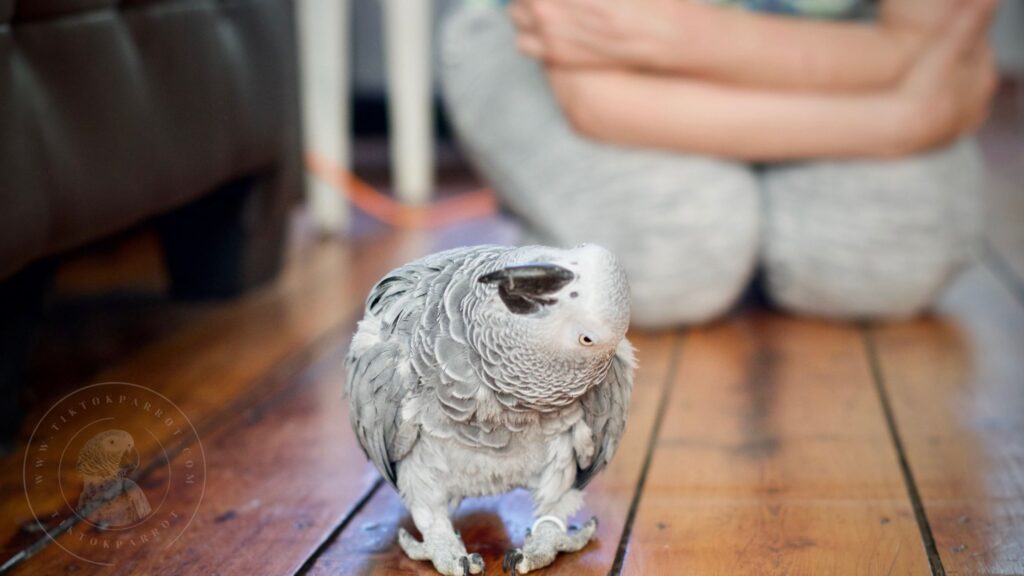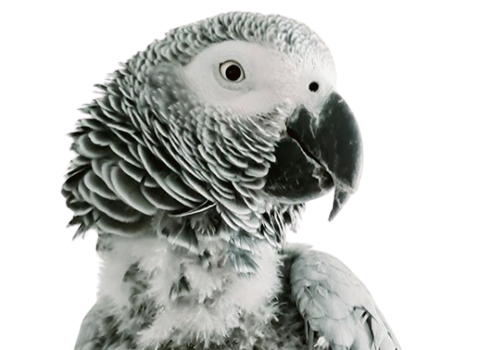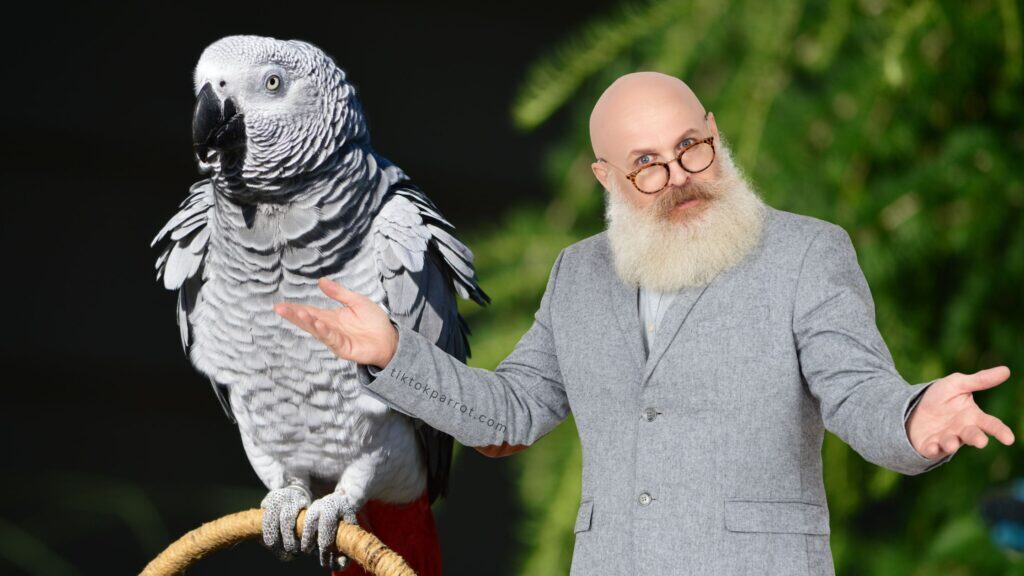Hey there, fellow African grey lover! If you’ve landed on this post, you’re probably one of the lucky few who gets to share their life with an African Grey parrot. First off, congrats! These parrots are known for their intelligence, their ability to mimic human speech, and, most interestingly, their complex range of emotions. Yes, African Greys have moods, just like us humans. And just like us, they sometimes have good days, bad days, and everything in between.
Table of Contents
In this article, discover how to recognize and respond to African Grey parrot moods. Learn their emotional cues, boost their happiness, and keep their feet healthy!
Understanding your African Grey’s emotional states can be a bit like learning a new language. But with a little patience (and a lot of love), you can become fluent in “African Grey Parrot Mood Talk.” So, grab your coffee or tea, sit back and start reading, because today we’re diving deep into the world of African Grey emotions and how you can respond to them like the perfect parrot whisperer you are!
1. Why African Grey Parrots Have Moods

Let’s start with the basics: why do African Greys have such intense moods?
Well, imagine living with a brain that’s wired like a toddler’s but with the emotional sensitivity of an adult. African Greys are incredibly intelligent, and with great brainpower comes great emotional complexity. They feel joy, fear, anxiety, boredom, and even jealousy. If you’ve ever gotten the “cold wing” after spending a little too much time with another pet, you know what I’m talking about!
Just like us, African Greys use their moods to communicate how they’re feeling. Unfortunately, they can’t just say, “Hey, I’m feeling kind of grumpy today,” so we’ve got to learn to read the signals they give us. Let’s break those down, shall we?
2. Signs Your African Grey is Happy
Who doesn’t love a happy parrot? When an African Grey is in a good mood, they can light up the whole room. So, what should you be on the lookout for?
- Fluffing Up Feathers: Think of it like a parrot’s version of a cozy blanket. When they’re relaxed and happy, African Greys often fluff up their feathers.
- Soft Talking or Whistling: A content parrot will often “talk” to themselves softly or whistle a cheerful tune. If they’re mimicking you, congrats—you’ve made it to parrot BFF status.
- Playfulness: A happy African Grey is often a playful one. They might toss toys around or do a little happy dance. It’s like their version of throwing a party!
But here’s the thing—just because your African Grey is happy one minute doesn’t mean they’ll stay that way forever. Mood swings are real, folks! So, what happens when your parrot decides they’ve had enough of your shenanigans?
3. How to Recognize a Grumpy African Grey
We all have off days, and so does your parrot. Recognizing when your African Grey is feeling less than sunny is important because it can save you both a lot of stress (and maybe a few pecked fingers).
- Feather Flattening: When your parrot’s feathers go from fluffy to flat, it’s like they’re saying, “Stay back! I’m not in the mood.”
- Hissing: Yes, parrots can hiss like snakes. If you hear this sound, it’s best to give your feathered friend some space. They’re not feeling social, and pushing it might result in a not-so-friendly nip.
- Avoidance: If your parrot is turning away from you, refusing treats, or avoiding eye contact, they’re probably not feeling it. This is their way of saying, “Not today, human.”
So, what should you do when your African Grey is having a grumpy moment?
4. Responding to Your Parrot’s Grumpiness
When your parrot’s in a bad mood, the best thing you can do is give them some space. African Greys, like us, need time to process their emotions. Try not to push interaction during these times—it’ll only stress them out more. Instead, respect their boundaries and let them come to you when they’re ready. They’ll appreciate it, trust me.
And don’t take it personally! Your parrot isn’t mad at you (well, probably not). They might just be feeling tired, overwhelmed, or bored. Speaking of boredom…
5. Signs of a Bored Parrot (and How to Fix It!)
A bored parrot is a cranky parrot. African Greys are super smart, which means they need a lot of mental stimulation to stay happy. If they’re not getting enough, you’ll know it.
- Feather Plucking: This is a big one. If your parrot starts pulling out their own feathers, it’s a sign that they’re stressed or bored.
- Repetitive Behaviors: Is your parrot pacing back and forth or constantly banging their beak on things? That’s boredom talking.
- Excessive Vocalization: If your usually chatty parrot suddenly turns into a screeching machine, it might be time to mix things up and give them some new toys or activities.
6. Keeping Your Parrot Engaged and Happy

So, how do you keep your parrot’s mind busy and prevent boredom?
- New Toys: Rotate their toys regularly to keep things fresh.
- Interactive Play: Spend time each day playing with your parrot. This could be anything from teaching them new tricks to just hanging out and talking to them.
- Foraging Activities: Parrots love a good challenge. Hide treats in foraging toys or create puzzles that they have to solve to get their favorite snack. It’s like mental gymnastics for them!
7. Foot Structure: The Unsung Hero of African Grey Life
Now, here’s something a little different—let’s talk about feet! African Greys have zygodactyl feet, which means they have two toes facing forward and two facing backward. This unique structure helps them grasp objects, climb, and balance effortlessly.
Your African Grey’s feet aren’t just for show—they use them constantly. Whether it’s climbing up their cage or delicately holding food, their feet are multitasking machines. However, foot health is super important, and problems like bumblefoot (a bacterial infection) can occur if they’re not given proper care.
Tips for Healthy Parrot Feet:
- Use natural wood perches of varying sizes.
- Avoid using wire cage bottoms—these can hurt their feet.
- Keep their claws trimmed to prevent overgrowth.
- Regularly inspect for signs of redness, swelling, or sores.
8. My final thoughts: Patience, Love, and a Little Humor
At the end of the day, I would say living with an African Grey parrot is a wild ride. They’ll make you laugh, they’ll make you cry (sometimes literally, if they bite!), but they’ll always keep you on your toes. Learning to recognize and respond to your parrot’s moods takes time, but with patience and a little humor, you’ll build an unbreakable bond with your feathered friend.
So, what do you think? Have you experienced any quirky moods from your African Grey? I’d love to hear about it in the comments below. Let’s share our parrot stories and tips!
If you liked this blog, please share it with your family and friends who might also find it helpful. If you love African Greys, join our community of Grey owners! You can meet other owners, share tips and learn from each other.
You might like to read these as well
Amazing Facts About African Grey Feet You Never Knew: A Deep Dive into Parrot Anatomy
The Secret Grooming Habits of an African Grey’s Head Feathers
Understanding the African Grey Molting Process And How To Help
Top 10 Toys to Keep Your Parrot Entertained and Engaged
10 Basic Care Tips for African Grey Parrot Owners
For more useful content about African grey parrots, you can subscribe my site with your email to get notification upon publishing a new blog, the subscribe box you can see on the right side of this page. Also if you get an alert on your web browser while browsing my site, allow it and that will also give you an alert whenever I publish a new blog.
Stay safe and much love!




